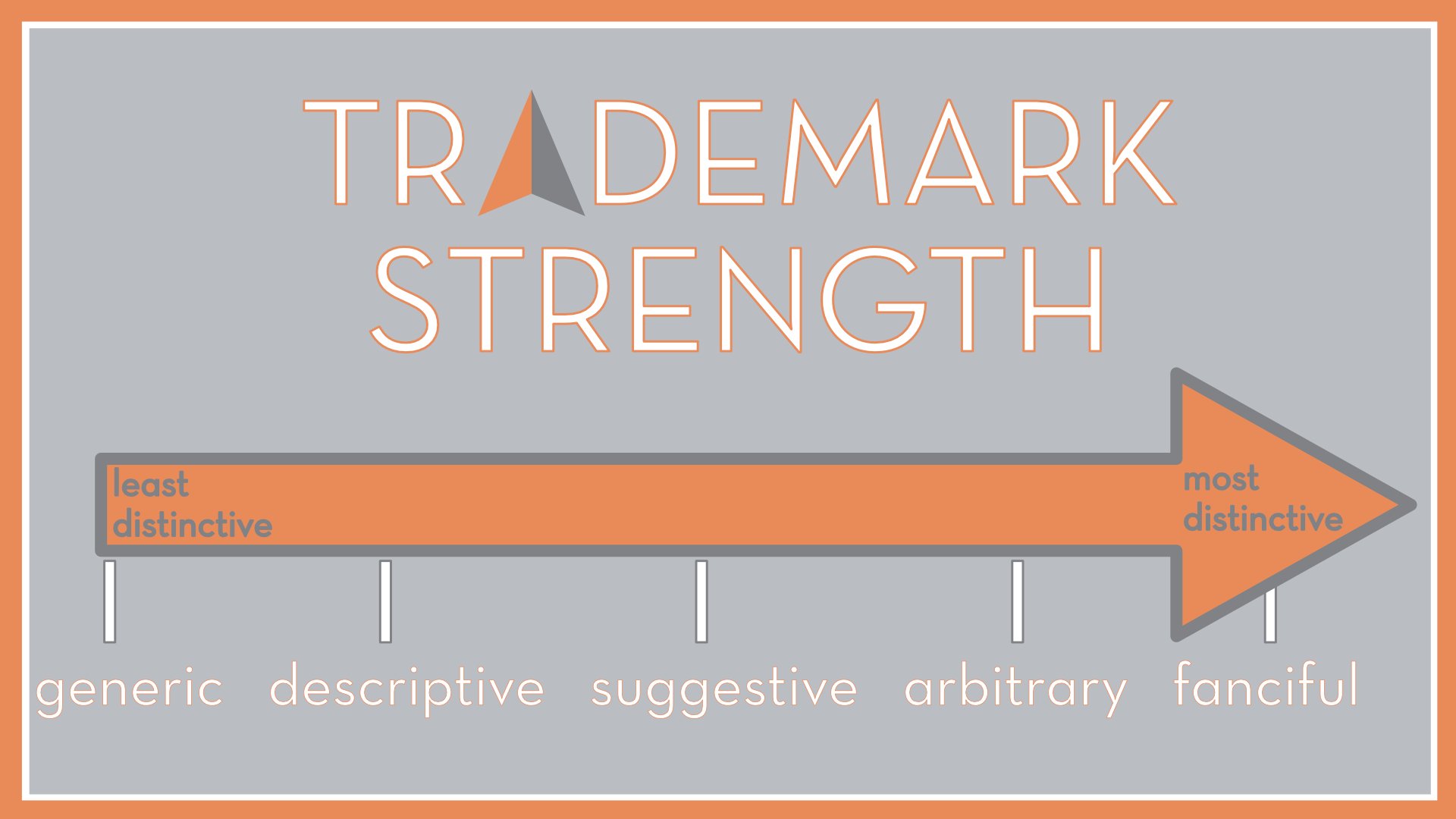How to Choose a Strong Trademark
What is a strong trademark? The main thing to know about a strong trademark is that it gets a lot of trademark protection. (Compared to a weak trademark, which isn’t as protectable.) Put differently, a strong trademark is not “cooler” than a weak trademark, it’s just easier to police and protect.
So how do you choose a strong trademark? It helps to understand the characteristics of strong and weak trademarks.
First: A Strong Trademark, Distinctiveness, and Secondary Meaning
Remember when I said that strength has nothing to do with a coolness factor? A “strong” trademark is another name for an inherently “distinctive” trademark. Specifically, the strongest trademarks have distinctiveness built into them.
And what's distinctiveness? Think of it as the ability to set a brand apart from other brands.
Weak trademarks aren’t inherently distinctive, though they can acquire distinctiveness.
Read on for an explanation of the types of trademarks and the spectrum of trademark strength.
The Spectrum of Trademark Strength

This shows, from left to right, the spectrum of trademark strength.
Generic Marks: The Lowest Tier of Strong Trademarks
At the far left is the weakest type of trademark: generic terms, which really aren’t trademarks at all. Coffee. Paper. Generic terms are the THING, not really the brand.
Trademarks can be in danger of what’s called “genericide.” Band aid, Kleenex, Tupperware... people use these terms to refer to any brand of bandages, tissues, and food containers (respectively), regardless of whether they’re actually that brand of product.
Descriptive Marks
Next, there are descriptive trademarks. These can be difficult to protect because they describe a characteristic or element of the products or services offered under the brand. From a free speech perspective, it’s hard to stop someone else from accurately describing her business with descriptive terms.
Over time, it’s possible for a descriptive mark to become distinctive. How? It takes some combination of time and money to make a descriptive trademark distinctive. (Money meaning money spent on brand awareness, advertising and marketing, etc.) Still, brands like BED BATH AND BEYOND and SHAKE SHACK are descriptive, but since they’ve developed that secondary meaning, they've acquired distinctiveness and consumers instantly recognize those otherwise descriptive brand names.
Suggestive Marks
Suggestive trademarks are sometimes confused with descriptive trademarks, but they more suggest than describe the products or services offered.
“Suggest versus describe,” you ask? “What’s the difference?” Think of brands like LYFT (no doubt chosen because of the expression “to catch a lift,”). Does the consumer automatically know what’s offered under the brand in the same way one knows what’s sold when she hears the name “Bed Bath and Beyond?” I would argue no. That’s because the term “Lyft” only suggests what services are offered (rather than describing it).
Arbitrary Marks
Arbitrary marks are normal, everyday words that are arbitrarily paired with an unrelated product or service. Apple is a prime example of an arbitrary pairing. In other words, apples have no logical connection to computers, so it is an arbitrary mark.
Fanciful Marks: The Strongest of Strong Trademarks
Fanciful marks are the cream of the crop in terms of strong trademarks. It is a unique, made-up term. Spotify and Starbucks are two mega brands that are completely recognizable to their respective dedicated consumers even though the brand names are fictional, “fanciful” words.
How to Choose a Strong Trademark
As you can see, it’s all about trademark distinctiveness. Even a descriptive brand can acquire strength and grow into a strong trademark, but it takes a little time and a lot of use.
From a pure branding and marketing perspective, sure, descriptive brands have their benefits. Your customers don't have to guess what your business is offering, for one. But from a trademark law perspective, strong trademarks are where it's at.
A trick? Try combining a more distinctive term with a more descriptive or generic term. Sure, you may not have exclusive rights to that descriptive term, but your customers will know what's offered under your brand. Plus, you'll have the benefit of using an arbitrary or fanciful term, adding strength to your brand.
Do you like free info? Looking for four easy things that you can do right now to protect your business online? Scroll down, sign up, and I'll see you in your inbox!



